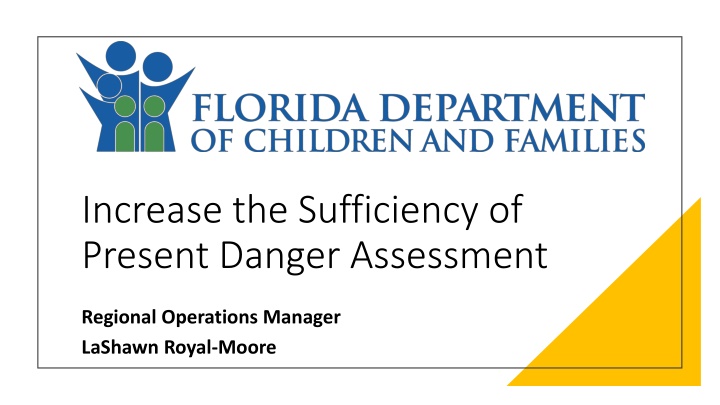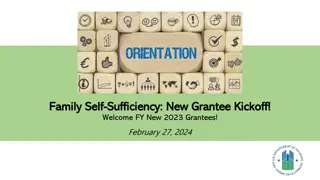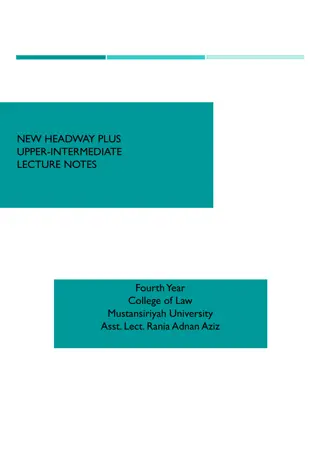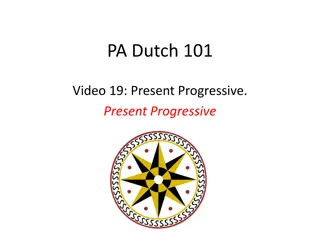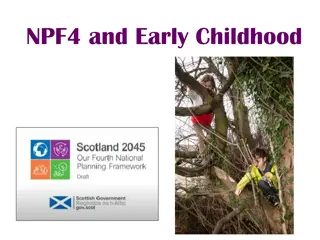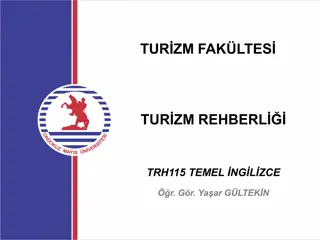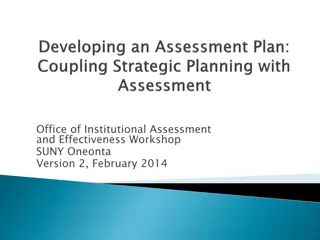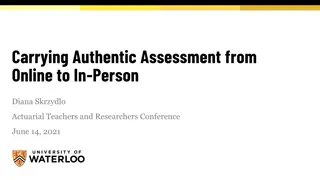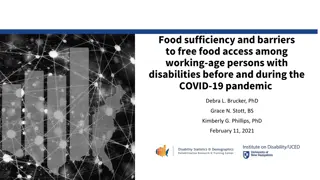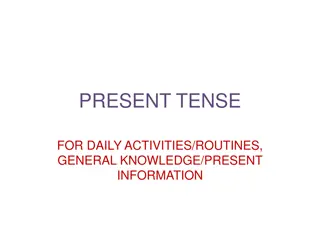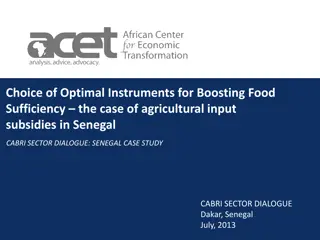Enhancing Present Danger Assessment Sufficiency
Navigate how a regional operations manager improved the sufficiency of present danger assessments in child welfare through strategic planning, communication tools, and ongoing monitoring. Explore techniques like SWOT analysis and fishbone diagrams that led to successfully meeting targeted goals.
Download Presentation

Please find below an Image/Link to download the presentation.
The content on the website is provided AS IS for your information and personal use only. It may not be sold, licensed, or shared on other websites without obtaining consent from the author.If you encounter any issues during the download, it is possible that the publisher has removed the file from their server.
You are allowed to download the files provided on this website for personal or commercial use, subject to the condition that they are used lawfully. All files are the property of their respective owners.
The content on the website is provided AS IS for your information and personal use only. It may not be sold, licensed, or shared on other websites without obtaining consent from the author.
E N D
Presentation Transcript
Increase the Sufficiency of Present Danger Assessment Regional Operations Manager LaShawn Royal-Moore
LASHAWN ROYAL-MOORE BIO 24 Years with DCF Bachelor of Criminal Justice CPM Graduate Master of Social Work Volunteer Certified Child Safety Practice Expert Master of Public Administration Certified Quality Assurance Reviewer Certified Trainer Certified Field Instructor
Increase the Sufficiency of Present Danger Assessment Increase the Sufficiency of Present Danger Assessment This presentation explores how a manger identified and addressed the problem of inadequate documentation and timeliness in child welfare present danger assessments. It covers the creation of a shared vision and the use of various tools and techniques, including the DISC Assessment for improving communication, strategic planning, SWOT analysis, fishbone diagrams, random quality assurance reviews, and ongoing monitoring. By applying these strategies and resources, we successfully enhanced the sufficiency of present danger assessments ahead of our targeted goal date.
Inspire a Shared Vision Inspire a Shared Vision CPM LEVEL 1 We are innovative and strategic professionals who create impactful content, design, and development that directly supports our goals!
The assessment of present danger in child protective investigations has two key components: Purpose of Purpose of Assessing Assessing Present Present Danger Danger 1. Initial Assessment: This involves completing a standardized instrument during the investigator's first face- to-face contact with the alleged child victim(s) and caregiver(s). 2. Ongoing Assessment: Beyond the initial visit, assessing present danger is an ongoing process. The investigator must continuously evaluate potential risks.
CPM CPM Level 2 Level 2 Cause Cause & & Effect Effect Fishbone Fishbone Diagram Diagram Increase PDA Sufficiency Flow Chart Cause and Effect Fishbone Diagram Data per Service Area Plans for Next Steps
SWOT Analysis SWOT Analysis Strengths Weakness Opportunities Threats Knowledgeable on policies and procedure New CPIs Round Tables conducted by PA Retention CPIS, FSC & FSA Vacancies Round Tables conducted by ROM Salary Experience PAs Lack of knowledge Need to increase Safety PDA accuracy Accommodation (Remote Work) Proficient PAs Lack of Experience DCF & CBC Competition Support Team (FSC & FSA) Need to increase timely PDA documentation. Workload Transfers Behavioral Health Consultants availability Traffic/Commute/Travel Time Transient/Visitors In-Service trainings Cost of Living Fleet availability Various DCF locations Individualized training plans. 83% of the team is not decisive. (Ds are decisive) 75% of the team are resistant to change. (S) Various Shifts 50% of the team is disorganized. (I) Over 92% of the team seeks tangible results. (S) 50% are informal. (I) 18% of the team is impatient. (D) 92% of the team are slow to make decisions. (C) 18% of the team thinks big. (D) Over 92% of the team have good follow-through. (S) 92% are consistent/reliable. (S)
Goal Goal - - Increase the Sufficiency of Present Danger Increase the Sufficiency of Present Danger Assessment from 47% to 67% by June 2024. Assessment from 47% to 67% by June 2024. Achievable Measurable Monthly learning circles. Specific Increase the sufficiency of Present Danger Assessment by 20%. 5% Internal monthly random PDA reviews. Weekly Cadence to discuss timely documentation of PDAs and Supervisory Reviews. Relevant Afford accurate assessment that will enhance appropriate interventions for families in need. Time-base Achieve goal by June 2024
Goal Goal Increase the Increase the Sufficiency Sufficiency of of Present Danger Present Danger Assessment Assessment from from 47% to 67% 47% to 67% by by June 2024. June 2024.
Quality Assurance Team Quality Assurance Team Monthly Random Reviews No Bias On the spot assistance
% of PDA Sufficiently Documented 80.00% 72.73% 72.22% 68.42% 70.00% 57.14% 60.00% 50.00% 41.67% 37.50% 40.00% 30.00% 20.00% 10.00% 0.00% 0.00% 0.00% Jul Aug Sep Oct Nov Dec Jan Feb
Fantastic news South Side! Congratulations on exceeding your goal ahead of schedule. The hard work, dedication, and perhaps a touch of strategic brilliance paid off.
Manager Manager Acknowledgement Acknowledgement In-Person Email Presentation of Data Announcement at Meetings Announcement at Annual Award Ceremony
QUESTIONS QUESTIONS
CONTACT INFORMATION CONTACT INFORMATION LaShawn Royal-Moore, MSW, MPA, CPM Regional Operations Manager Florida Department of Children and Families 401 NW 2nd Avenue N526 Miami, FL 33128 Cell: 786-375-7784 Email: LaShawn.Royal-Moore@myflfamilies.com
